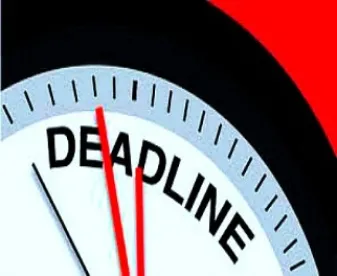A government prime contractor with more than 50 employees and a single federal government contract worth at least $50,000 must comply with the federal affirmative action regulations, which includes establishing a written Affirmative Action Program (“AAP”) for each of its establishments. See 41 CFR 60 1.20(e). Similarly, a subcontractor must also comply with the federal affirmative action regulations and establish a written AAP if it has more than 50 employees and a single contract (i.e., subcontract or supplier agreement) of at least $50,000 to provide goods or services that are necessary for the performance of an ultimate federal government contract, or that fulfills a part of the prime contractor’s agreement with the federal government. Therefore, several government contractors must establish an AAP and must comply with federal affirmative action requirements as part of their obligations when performing work for the federal government.
As part of its affirmative action obligations, each covered contractor and subcontractor must annually file with the Department of Labor complete and accurate EEO-1 forms, which include detailed demographic workforce data, including data about race and ethnicity of employees, gender of employees, and job categories. 41 CFR 60 1.7(a)(1). The Office of Federal Contract Compliance Programs (“OFCCP”) enforces the affirmative action regulations and frequently audits contractors to confirm that they are complying with AAP requirements.
The Freedom of Information Act (“FOIA”) allows the public to seek public records from the federal government. To obtain records, the requestor must submit a FOIA request to the particular federal agency that holds the records. However, not all government records are subject to FOIA. Various exemptions allow private parties, including government contractors, the right to object to providing information that they believe should not be in the public domain. FOIA provides for nine exemptions to disclosure, including, but not limited to, Exemption 1 (information that should be kept secret in the interest of national defense or foreign policy), Exemption 4 (protecting trade secrets and commercial or financial information), and Exemption 6 (protecting personnel and medical files and similar files). See Department of Justice Guide to the Freedom of Information Act.
A nonprofit news organization identified as the Center for Investigative Reporting has issued a FOIA request to the OFCCP to obtain EE0-1 Type 2 Report data that was submitted by federal contractors and first-tier subcontractors from the reporting years between 2016 and 2020, which includes various demographic data about the contractors’ workforce. Notably, EEO-1 reports containing compensation information (Component 2 of EEO-1 Reports) are not covered by the FOIA request. Also, EEO-1 reports filed by single-establishment contractors (Type 1) and other EEO-1 reports filed by multi-establishment contractors (Types 3, 4, 6, and 8) also are not covered by the FOIA request. This FOIA request ultimately resulted in litigation in the Federal District Court for the Northern District of California, under case number 3:22-cv-07182. As a result of this FOIA request and the pending litigation, the OFCCP likely will produce much of the requested EE0-1 Type 2 Report data.
However, the OFCCP has provided contractors and subcontractors with a final opportunity to object to the production. Contractors’ final deadline to object to the production of their EEO-1 Type 2 Report Data is March 3, 2023. Contractors who desire to assert an objection must visit the website at OFCCP Submitter Notice Response Portal and follow the instructions to make that objection.
Contractors who have already submitted objections also should review the “Non-Objector Contractor List” at OFCCP Submitter Notice Response Portal to confirm that they are not listed on it. To facilitate the objection process, OFCCP has published a list of contractors and subcontractors who have not asserted objections. Therefore, if a contractor has already asserted an objection, it should not be on the list. Contractors that have previously objected to the production should review each of the tabs of the “Non-Objector Contractor List” to confirm that they are not included. If the contractor is still on the list, it must also request the correction to the list by March 3, 2023.
After the close of the response period on March 3, 2023, OFCCP will then publish a second updated list by March 10, 2023, which will remove contractors that submitted objections between February 10, 2023, and by March 3, 2023. Contractors will then have one final opportunity to contact OFCCP, no later than March 17, 2023, if they believe their company was improperly listed after making a previous request for removal. However, to be considered for removal from the list, contractors must contact the OFCCP by March 3, 2023.





 />i
/>i
